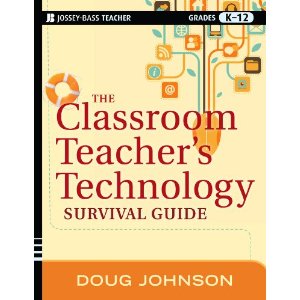Encouraging Teens to Read
Encouraging Teens to Read
St. Peter School Hilites, Feb 1991
I don’t know of a parent or teacher in St. Peter who does not actively encourage their adolescents to read. Yet between the ages of 12 and 18, many teens who may have been voracious readers in elementary or middle school, nearly stop reading. What causes this decrease in reading? And how can parents and teachers help teenagers maintain a “reading habit” until, as adults, it has become a life-long activity?
The peak of reading interest for many students comes between the ages of 12 and 14. It is not uncommon for students this age to read as many as 200-300 books per year. Yet by the time a student is in the upper grades of high school, readers can be considered well above average if they are reading only 25 books a year.
There are a number of reasons for the decrease in amount of reading done by teens:
- Adolescents are reading longer, more complex, and therefore, more time-consuming materials. Books of 70-120 pages written especially for adolescents are often abandoned for adult literature.
- Most students have increasing demands made of their extracurricular time. Sports, jobs, hobbies, clubs, and more demanding homework all use the time that younger children formerly spent reading.
- There are fewer opportunities for teens to hear about and access books of interest to them. Regular book talks in classes or as a part of the media program are no longer given. Senior high library book collections often build non-fiction and reference collections at the expense of fiction collections, especially in tight budgetary times. While most public libraries have children’s and adult sections, few maintain a special “young adult” collection.
- Teens are often required to read books which are inappropriate for them. According to G. Robert Carlsen, author of Books and the Teenage Reader and past-president of Nation Council of Teachers of English, “At least part of the downward slide [in reading] comes about because schools thrust overly mature literature (the classics) on senior-high students and succeed only in building antagonism toward all books.”
So what can parents and teachers do to help keep teens reading? A number of things.
- We can recommend and provide books which are appropriate for adolescent readers. Almost all teens read for experience. Young adults, usually reading about characters 1-2 years older than themselves, use literature to find out how others have handled the awesome developmental tasks of adolescence, and to dispel the fear that they are alone in facing the difficulties of becoming an adult. G. Robert Carlsen identifies the following developmental tasks as those which everyone must undertake to become a fully mature adult. As an adolescent, one must: - become increasingly independent and separate from parents. - establish new relationships with peers, based on common interests or personalities. - find a significant role model. - come to terms with one’s body. - come to terms with one’s sexuality. - achieve a sense of status. - achieve an integrated system of values. - gain work experience. - make a vocational choice. We should buy, assign, or recommend books which fit the student’s age, not his/her reading ability alone. A 14-year-old who reads at a 5th grade level does not have 5th grade interests; a 14 year-old who reads on a college level does not have the experiential level to enjoy or appreciate adult books with complex themes.
- Do not discourage any reading, and make reading a non-threatening situation. Comic books, Mad magazine and formula novels like Sweet Valley High or the Hardy Boys play an important part in most young people’s reading development. It is while reading “sub-literature” that the task of de-coding words gets pushed into the reader’s subconscious, and the excitement and interest of the story itself takes over. Reading becomes an enjoyable activity, not a difficult task. Students should also have ample opportunities to read without the threat of a book report or test looming at the end of the last chapter.
- Support adequate funding for libraries so fiction collections can be maintained. Current fiction titles with eye-catching covers in an adequate supply will do more to stimulate reading than a hundred well-meaning parents, librarians, or teachers.
- Make your home a good reading environment. People who read usually have children who read. Do you subscribe to magazines and newspapers? Does your family have a public library card? Jim Trelease, author of The Read-Aloud Handbook encourages parents to make sure their children have good lamps for reading in bed and to have a rack of books and magazines in the bathroom. Buy your teenagers books (or gift certificates for books) as birthday or Christmas gifts, and encourage them to use their discretionary income to purchase books.
- Share your reading experiences with your children. Although it seems that parents get displaced by peers, coaches, or celebrities as role-models, parents are still (perhaps silently or subconsciously) emulated by their adolescent children. Reading is a social activity. Readers live in groups of other readers. Share what you read with your teenagers, and encourage them to share their “arm-chair” discoveries with you.
If you’d like a list of current books and authors popular with young adults, please contact me at the high school media center.





Reader Comments (1)
If any teenagers out there need a good book to read, check out my blog. I'm a teenager myself, so I choose books on account of how interesting they are, not just theme and plot structure and stuff. And everything I review is clean.